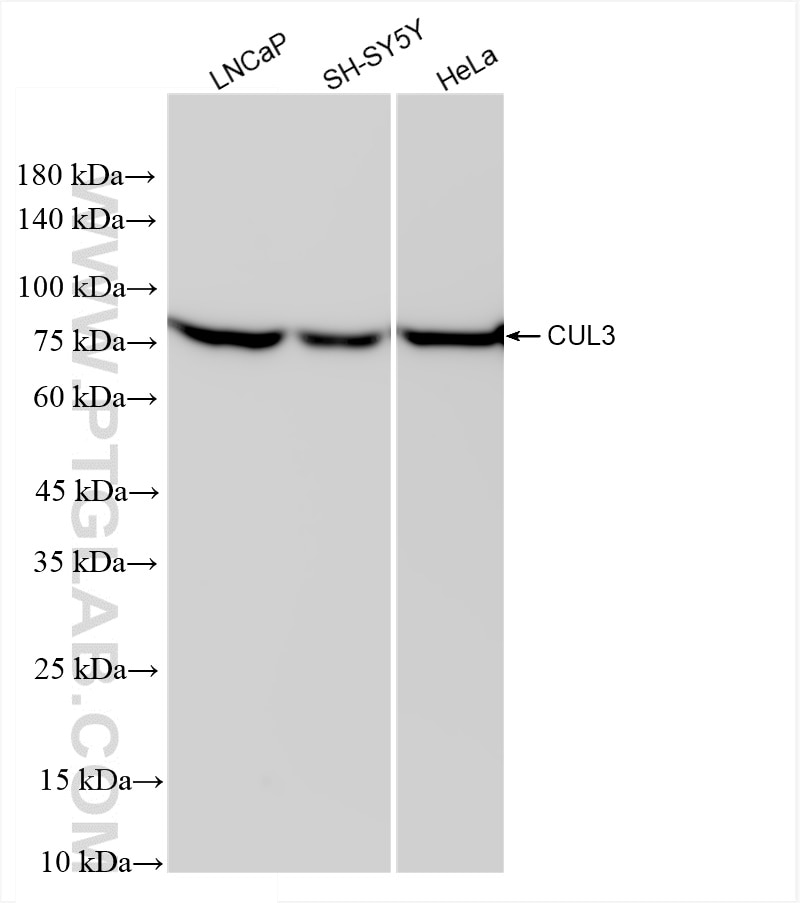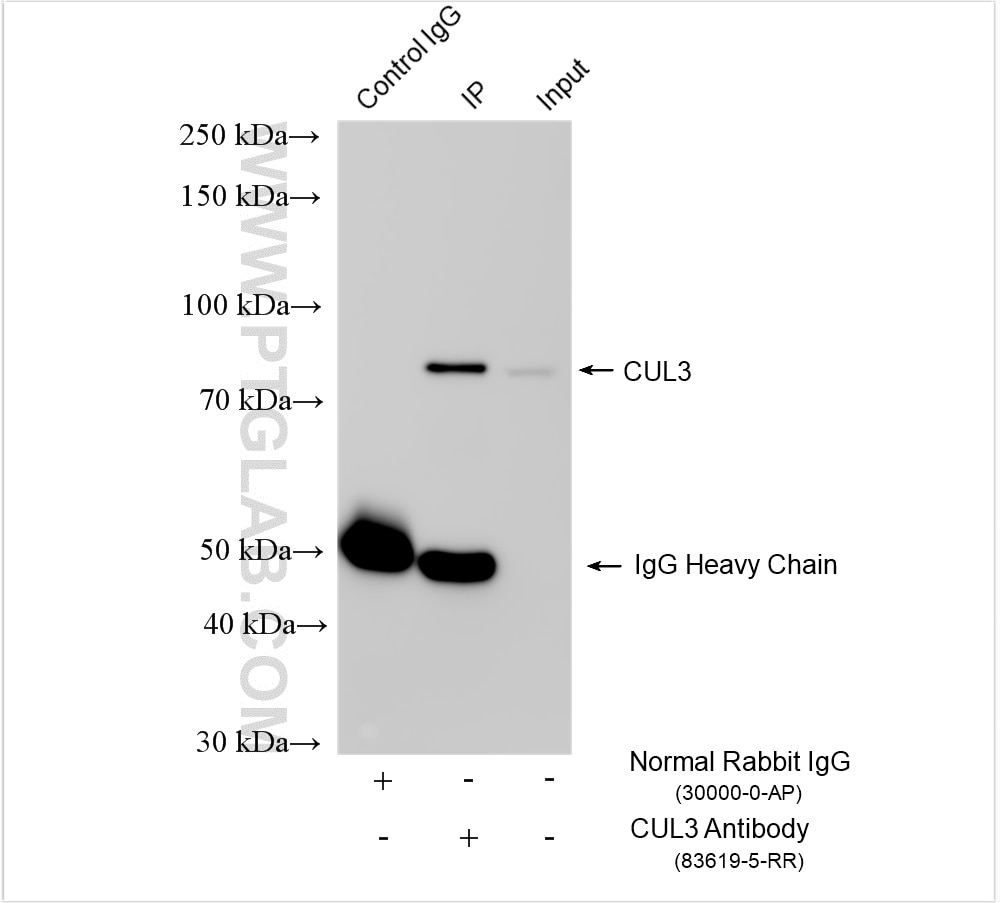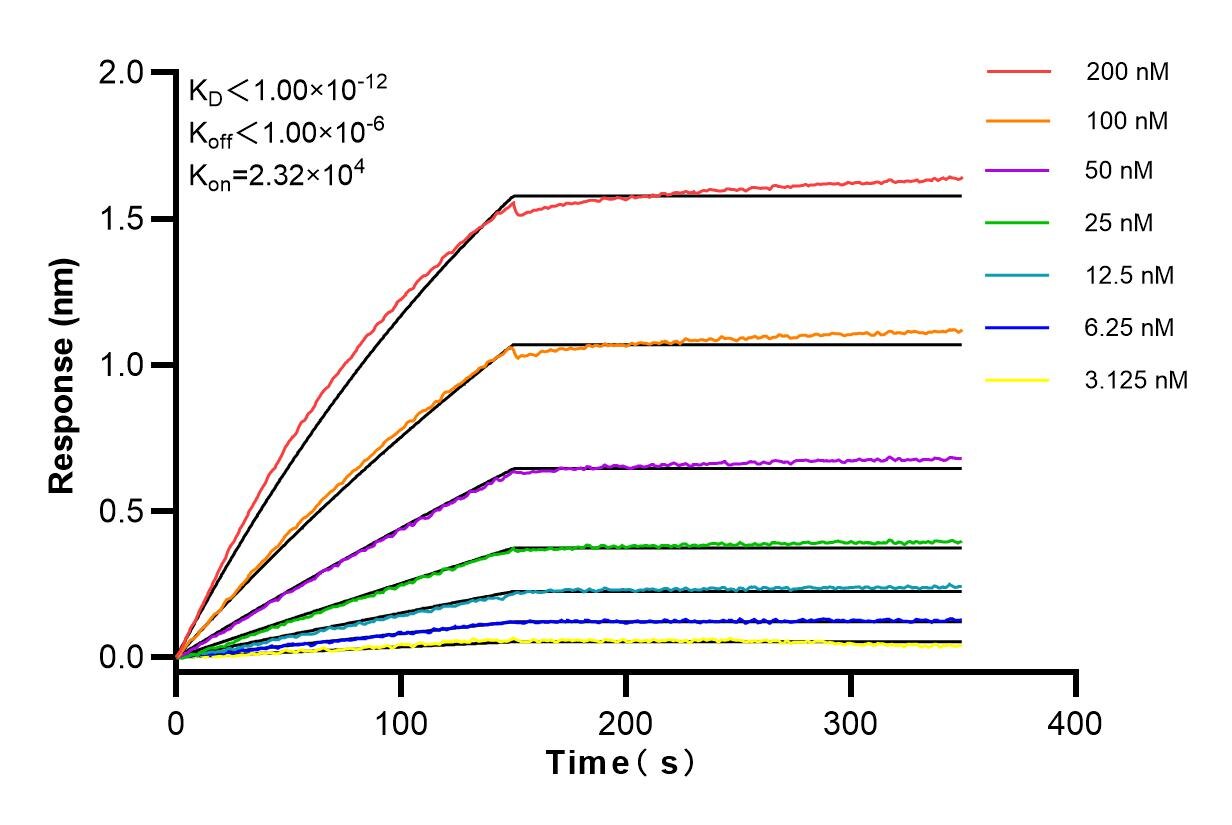Tested Applications
| Positive WB detected in | LNCaP cells, SH-SY5Y cells, PC-12 cells |
| Positive IP detected in | HeLa cells |
Recommended dilution
| Application | Dilution |
|---|---|
| Western Blot (WB) | WB : 1:5000-1:50000 |
| Immunoprecipitation (IP) | IP : 0.5-4.0 ug for 1.0-3.0 mg of total protein lysate |
| It is recommended that this reagent should be titrated in each testing system to obtain optimal results. | |
| Sample-dependent, Check data in validation data gallery. | |
Product Information
83619-5-RR targets CUL3 in WB, IP, ELISA applications and shows reactivity with human samples.
| Tested Reactivity | human |
| Host / Isotype | Rabbit / IgG |
| Class | Recombinant |
| Type | Antibody |
| Immunogen |
CatNo: Ag1555 Product name: Recombinant human CUL3 protein Source: e coli.-derived, PGEX-4T Tag: GST Domain: 469-768 aa of BC039598 Sequence: KLEGMFRDMSISNTTMDEFRQHLQATGVSLGGVDLTVRVLTTGYWPTQSATPKCNIPPAPRHAFEIFRRFYLAKHSGRQLTLQHHMGSADLNATFYGPVKKEDGSEVGVGGAQVTGSNTRKHILQVSTFQMTILMLFNNREKYTFEEIQQETDIPERELVRALQSLACGKPTQRVLTKEPKSKEIENGHIFTVNDQFTSKLHRVKIQTVAAKQGESDPERKETRQKVDDDRKHEIEAAIVRIMKSRKKMQHNVLVAEVTQQLKARFLPSPVVIKKRIEGLIEREYLARTPEDRKVYTYVA Predict reactive species |
| Full Name | cullin 3 |
| Calculated Molecular Weight | 89 kDa |
| Observed Molecular Weight | 80-89 kDa |
| GenBank Accession Number | BC039598 |
| Gene Symbol | CUL3 |
| Gene ID (NCBI) | 8452 |
| RRID | AB_3671232 |
| Conjugate | Unconjugated |
| Form | Liquid |
| Purification Method | Protein A purfication |
| UNIPROT ID | Q13618 |
| Storage Buffer | PBS with 0.02% sodium azide and 50% glycerol, pH 7.3. |
| Storage Conditions | Store at -20°C. Stable for one year after shipment. Aliquoting is unnecessary for -20oC storage. 20ul sizes contain 0.1% BSA. |
Background Information
Cullin-RING-based BCR (BTB-CUL3-RBX1) E3 ligase are the largest family of ubiquitin ligases which mediate the ubiquitination and subsequent proteasomal degradation of target proteins. One of seven cullin proteins serves as a scaffold protein for the assembly of the multisubunit ubiquitin ligase complex. CUL3 (Cullin-3) ubiquitin ligase complex targets multiple substrate for ubiquitination including cyclin E and of cyclin D1. Defects in CUL3 are the cause of Pseudohypoaldosteronism type 2E (PHA2E) characterized by severe hypertension, hyperkalemia, hyperchloremia, hyperchloremic metabolic acidosis, and correction of physiologic abnormalities by thiazide diuretics.
Protocols
| Product Specific Protocols | |
|---|---|
| WB protocol for CUL3 antibody 83619-5-RR | Download protocol |
| Standard Protocols | |
|---|---|
| Click here to view our Standard Protocols |








